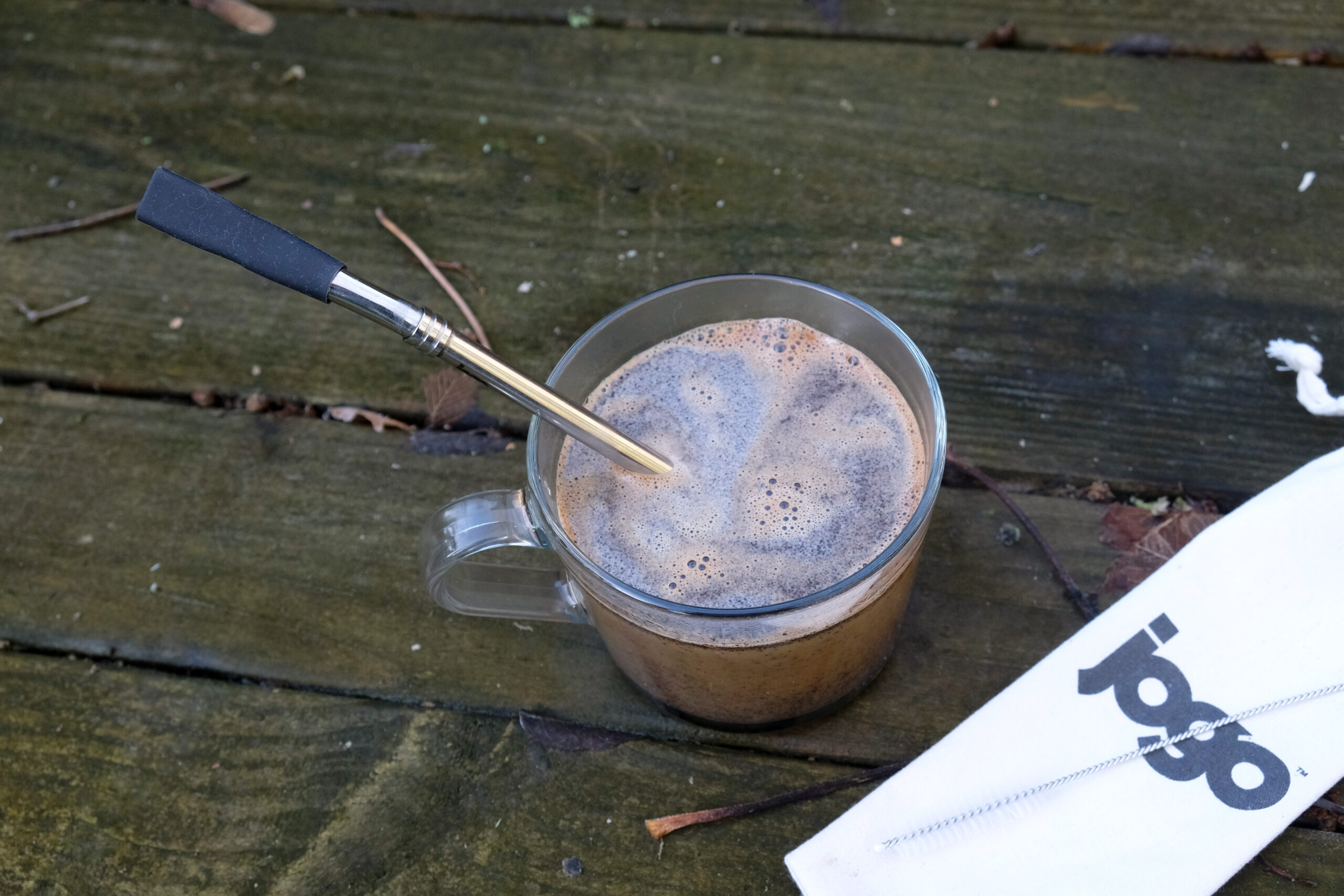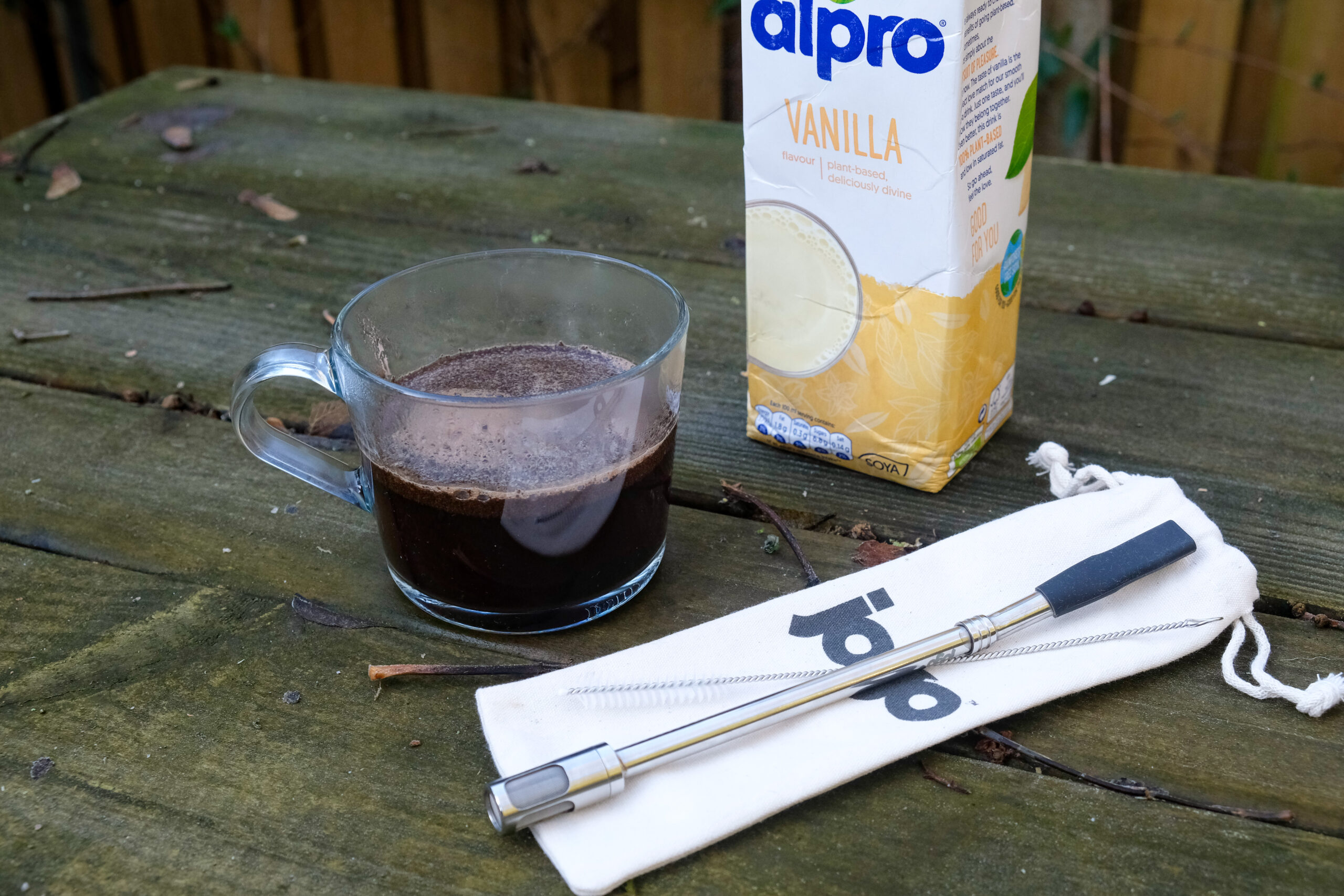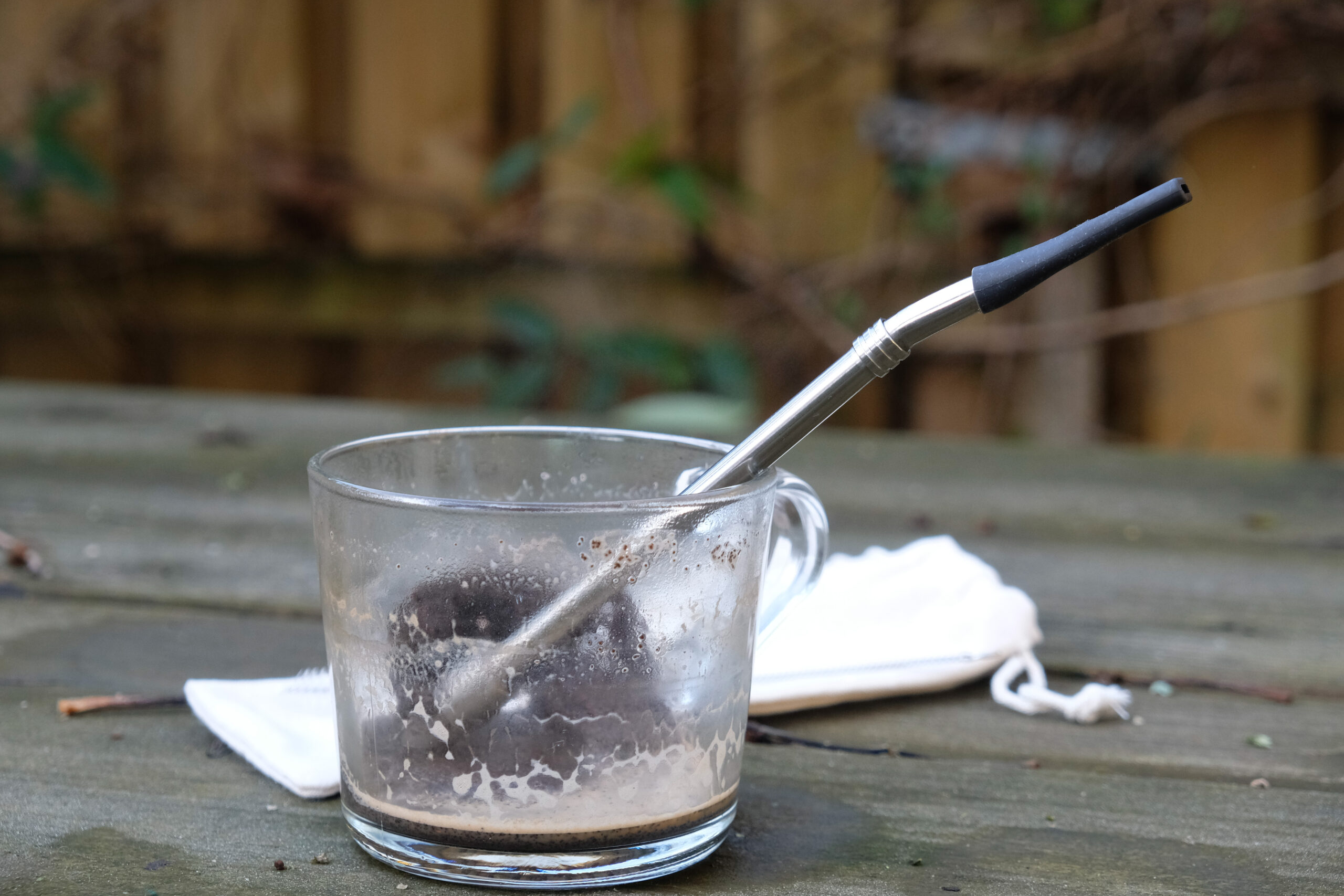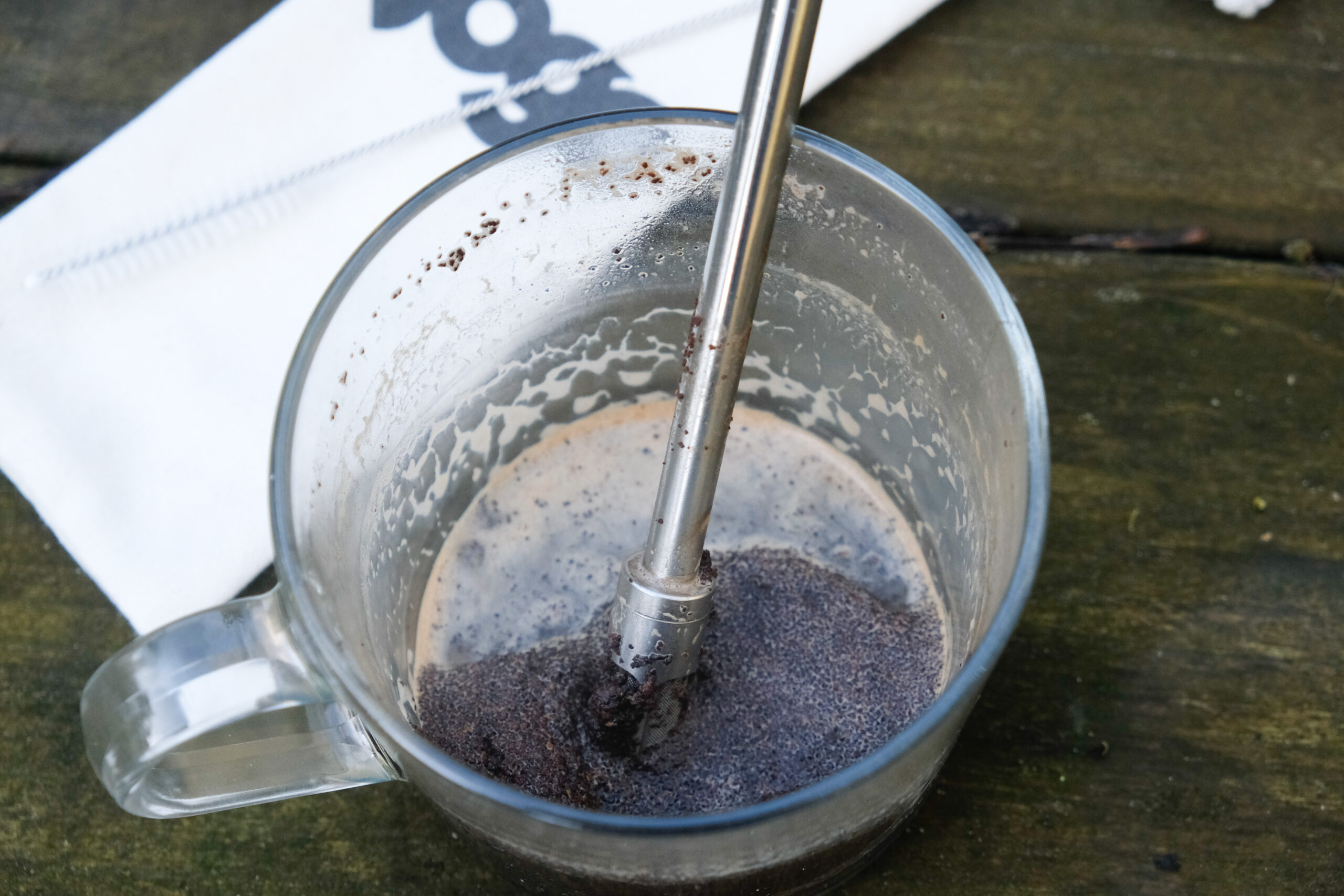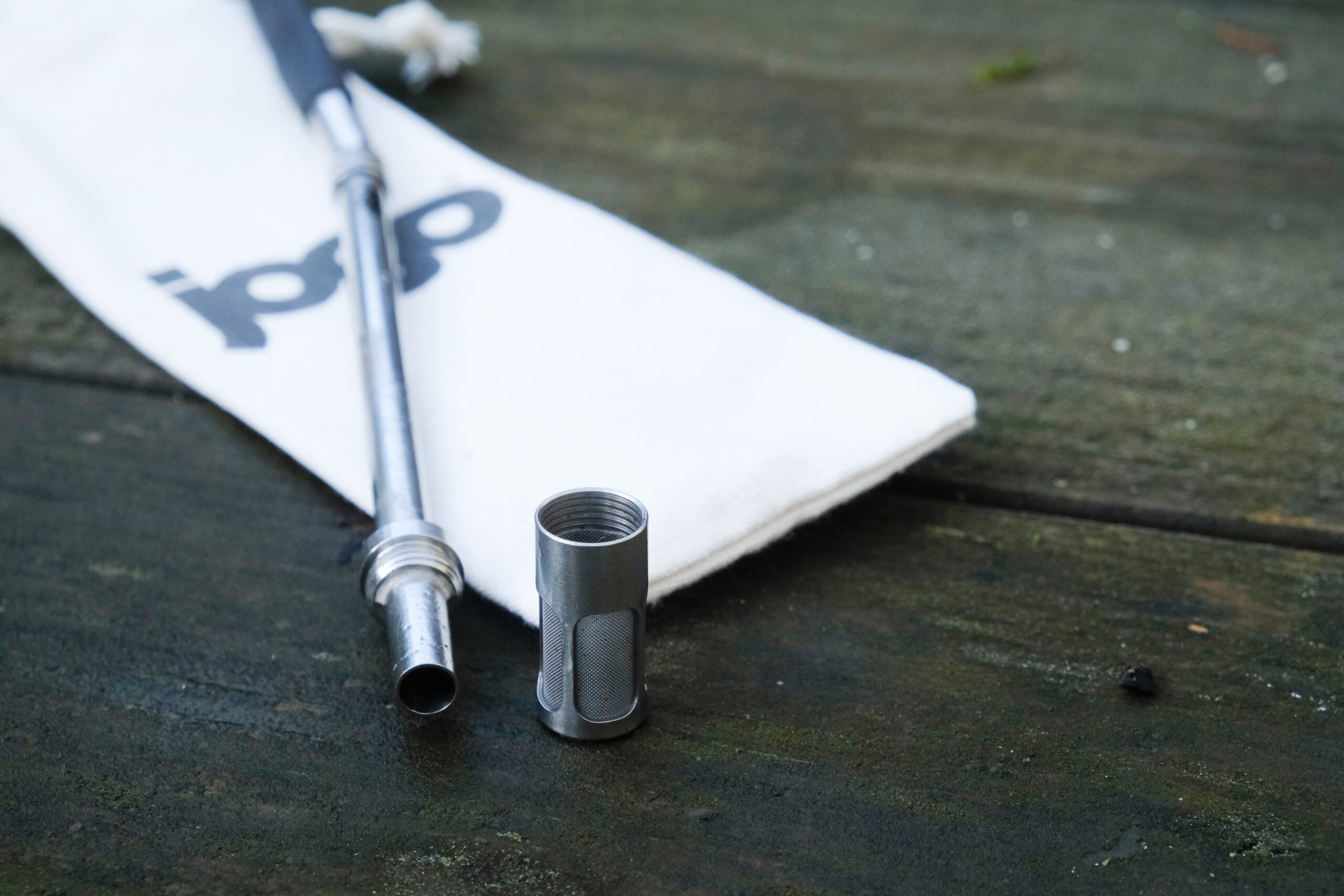Is the JoGo Straw the answer to lo-faff tasty coffee on the move? And does it work with herbal tea? We put the kettle on to find out.
- Brand: JoGo
- Product: JoGo Straw
- From: JoGo
- Price: $24.95
- Tested: by Hannah for 2 months
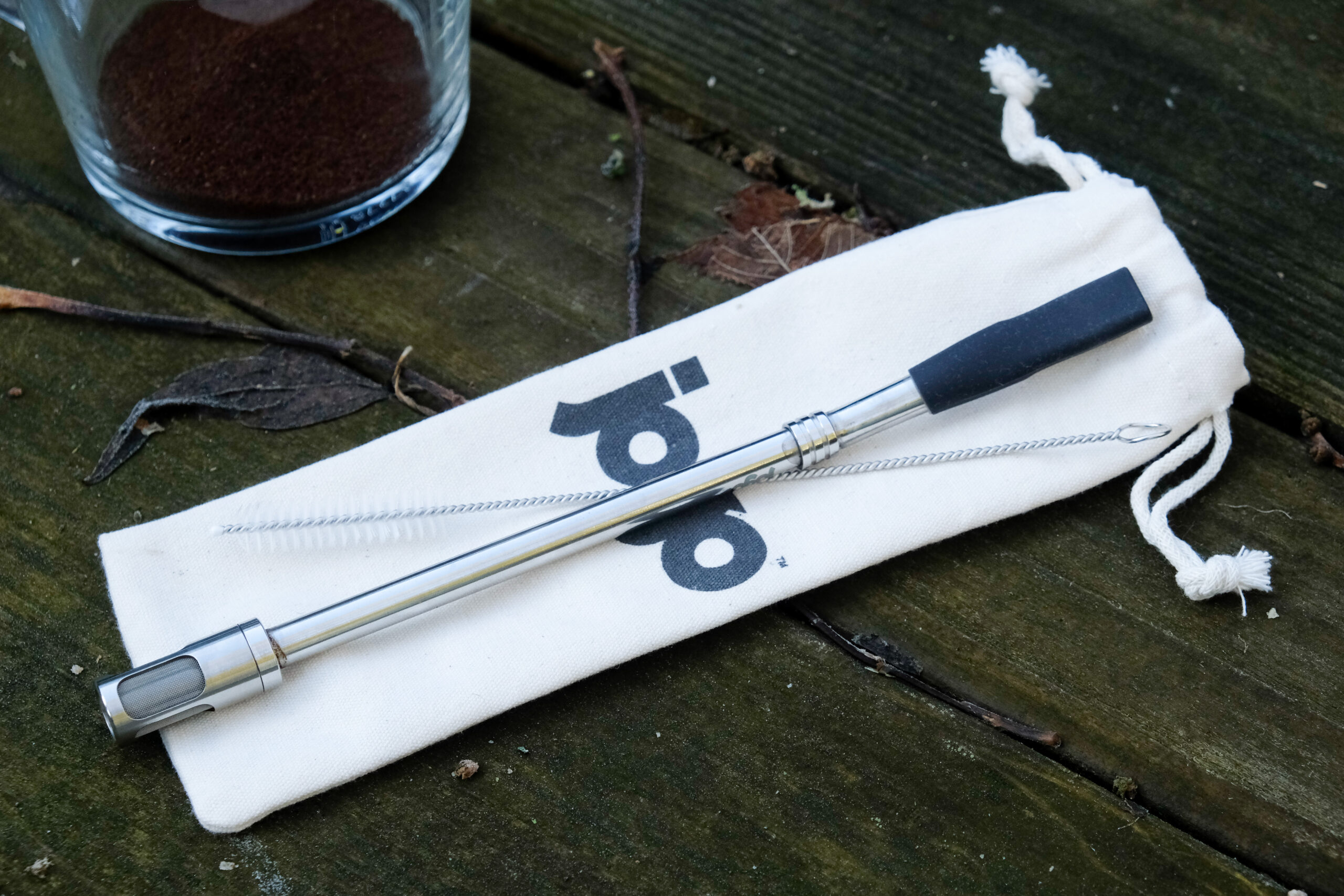
I would describe myself as ‘coffee tolerant’. I can drink coffee in most forms, and don’t turn my nose up at much. But I can still appreciate a better quality coffee, and am always interested in travel solutions for making coffee on the go a bit tastier.
My usual approach to camping coffee is an Aeropress. This is easy to clean, quite low faff, and produces a tasty cup of coffee. On the downside, it only makes one cup at a time, and the set up can be a little precarious out in the wild – you really want a flat surface out of the wind. I’ve not yet been on epic bikepacking adventures, but even car camping with my kids, space is at a premium. The Aeropress doesn’t take up tons of room, but it is bigger than the Jogo straw.
I wondered then, would the JoGo Straw offer up a super travel sized coffee making solution that also wouldn’t need quite such careful balancing?
The Jogo straw was inspired by the South American Herba Mate set up, where leaves are brewed in a cup and drunk through a straw. The JoGo gives this a modern metal twist, with extra fine filter on the bottom, silicone mouthpiece, and easy clean option with the removable filter piece. It comes in a neat drawstring bag along with a teeny bottle brush for deep cleaning.
The JoGo Straw In Use
The process couldn’t be simpler: heat your water, put your coffee in your cup, add the water, let brew, drink. In this respect, the Jogo strips out the tricky balancing act of filling an Aeropress and pushing the water through, so it feels like a quicker and easier solution. Of course, you need multiple straws if you need to make more than one cup of coffee.
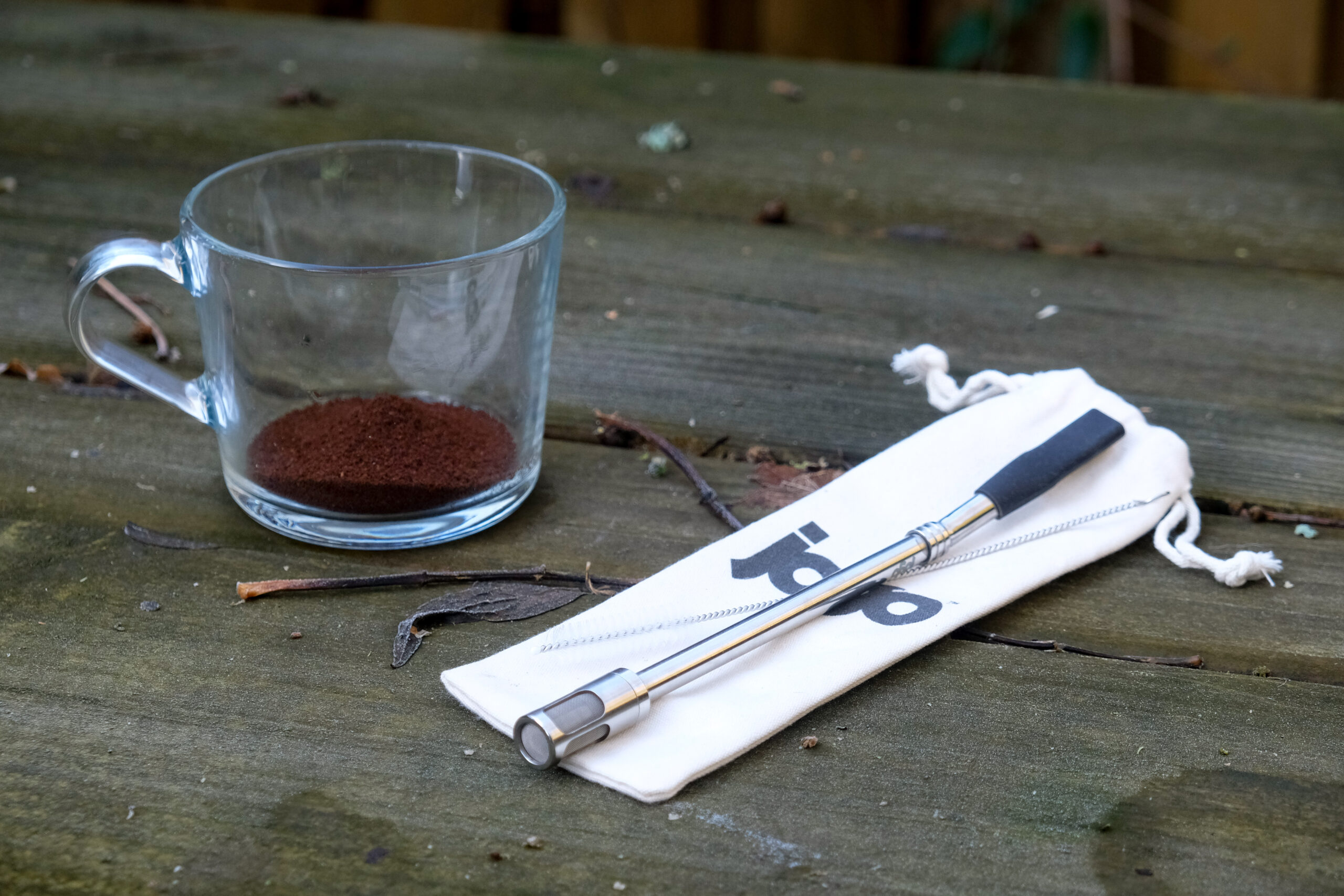
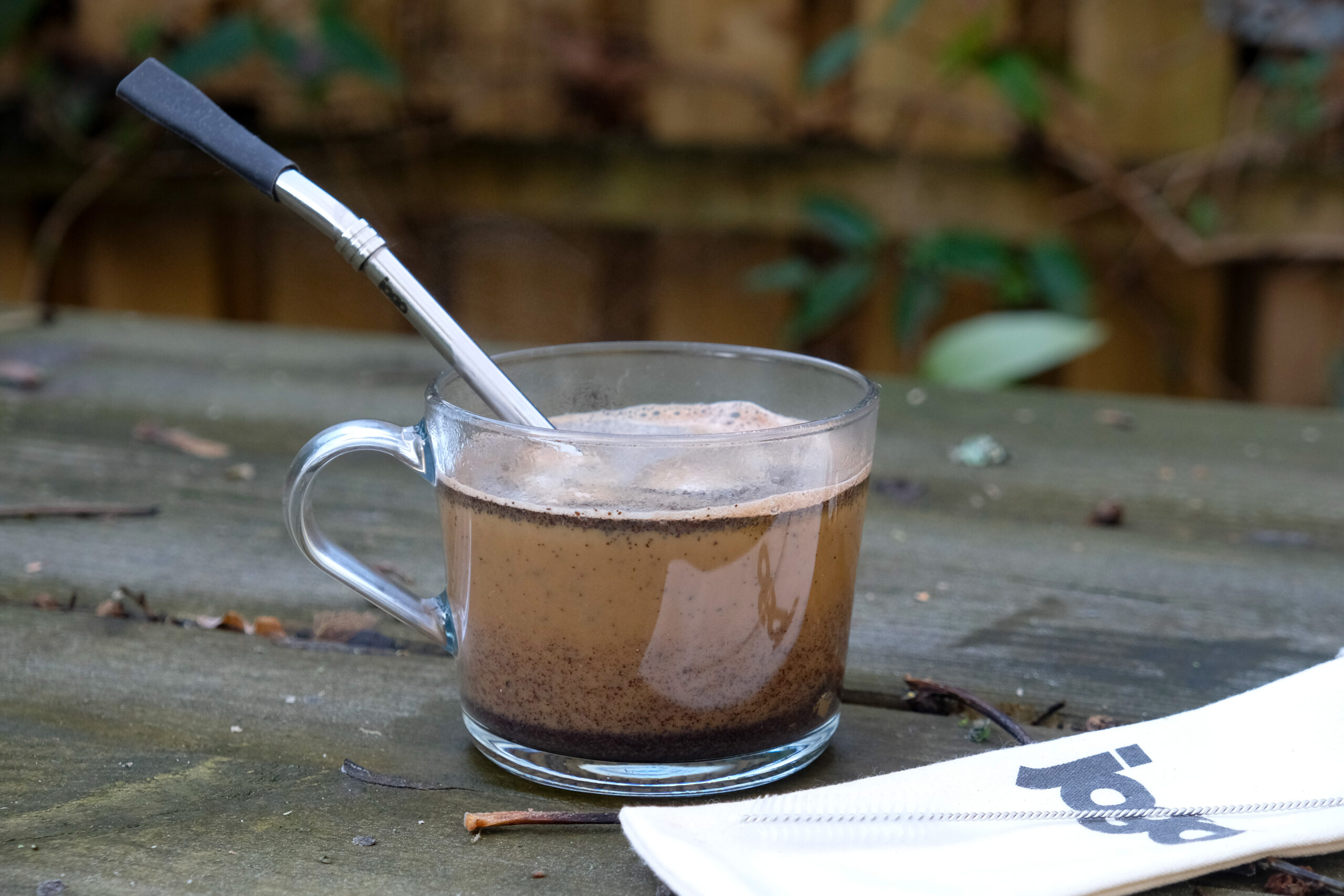
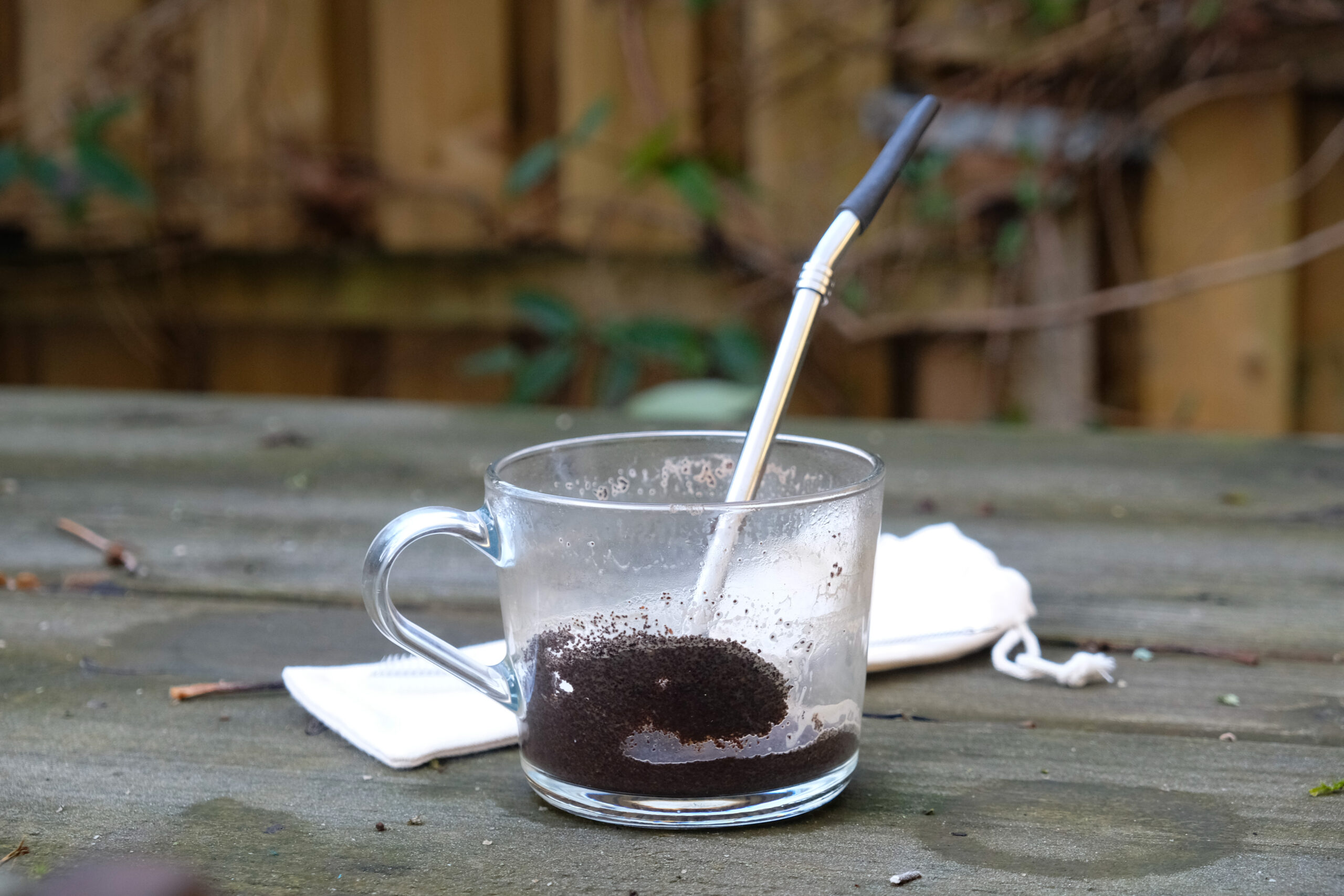
The silicone mouth piece stops you burning your lips, but it doesn’t stop hot coffee burning the inside of your mouth. You can pinch the mouthpiece a little to reduce the flow, but it still seems difficult to me to just take a tiny sip on the straw to test the temperature of the coffee. However, I think this is less of a problem outdoors, where by the time your coffee has brewed, drinking it while it’s still hot is usually more of an issue.
If you’ve ever made the mistake of drinking a cocktail through a straw, you’ll likely know how easy it is to drink quickly. With the JoGo, you may well find you neck your coffee pretty sharpish – handy perhaps if you just want that morning shot to get you up and at ’em out on the trail.
Once you’ve finished your coffee, you’re left with the straw and all the coffee grounds in the bottom of your cup. I’d say this is a little harder to clean out than an Aeropress, where you can generally just pop that brewed puck of coffee out, but not onerous. Certainly easier than cleaning out a cafetiere, where you find yourself endlessly swilling water round in an attempt to dislodge the final grains from the bottom of the deep jug. Ideally here you’d want a water source to swish your cup and the end of the straw out, so you might not want this set up on a trip where water is scarce. I don’t see a need to take the bottlebrush on the road with you – unless you fully immerse the straw into dirty water, or a washing up bowl, pretty much all the bits are going to be on the outside of the straw anyway.
How does the coffee taste?
Here is where your choice of coffee becomes important. A very fine espresso grind (such as our very good office coffee grinder can do) tastes muddy and floury. A supermarket espresso grind doesn’t have the silty sensation, but can tend to clog the end of the straw. The best results I’ve had were with a coarser cafetiere style grind, which gave a good flavour and also didn’t clog the straw, even if I stirred up the grounds while drinking.

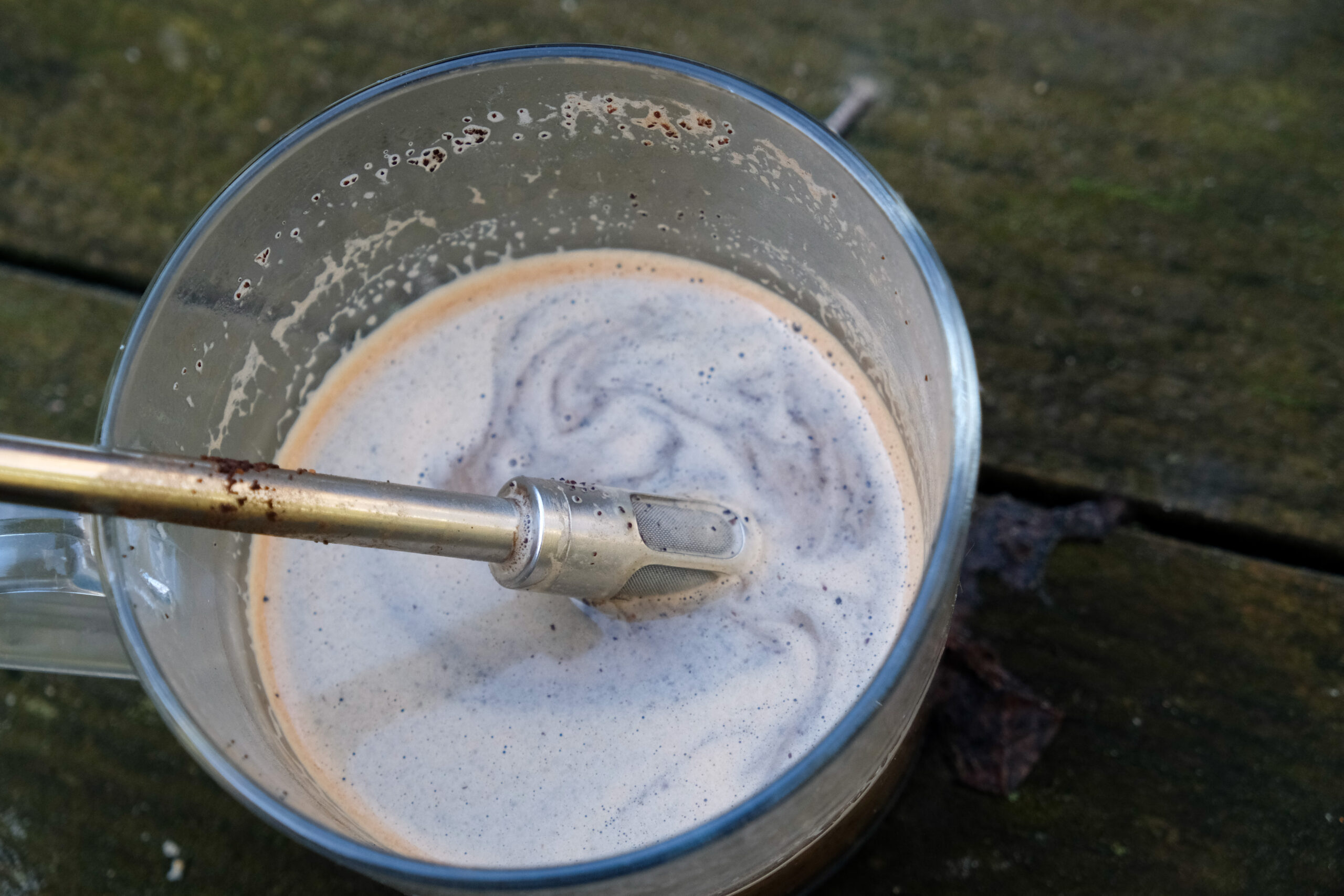
Overall, I’d put the results as being as good as a decent cafetiere of coffee, better than a poor cafetiere, and substantially better than your typical American diner filter coffee.
If you grind your own beans and can do a small batch for your overnight trip at a coarse cafetiere grind, then that would be ideal. If you’re like me and buy it by the bagful ready ground, you might not want to depart from your usual espresso grind just for the sake of a short camping trip.
Not long after the JoGo arrived, I spotted a discussion on the Singletrack Forum about tea, teabags, and single use waste. It hadn’t occurred to me before, but even compostable teabags are creating single use waste, and loose leaf tea is a greener option. Forumites were discussing how best to make a single cup of tea using loose leaf, observing that it was tricky to get a receptacle that would allow the leaves to expand and float enough. I did try the JoGo for this purpose, but since the tea leaves keep brewing in your mug it made for a very bitter taste as the drink progressed.
In the interests of experimentation, I also tried the Jogo straw with some loose leaf herbal teas, since I’d quite often leave a herbal teabag in the cup rather than brew it and remove it. Some of the dustier (cheaper?) teas gave a touch of that silty sensation, but by and large it was quite effective for this purpose. I guess then you could use the JoGo out on the trail for a morning coffee and a bedtime herbal something.
Overall
Novelty or innovation? I think the ‘need’ for the Jogo straw is probably pretty niche: it’s for the person who is saving as much weight and space as possible, but who really really wants the comfort or psychological boost of a half decent coffee in the morning. But for those people, it does the job well. Be careful not to burn your mouth or you’ll be cursing all the way to the first ice cream shop.

